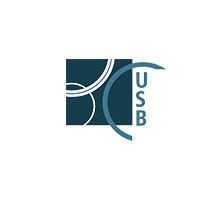Machava, Rahel  ORCID: 0000-0002-3309-3851
(2025).
Parallel phospholipid transfer by Vps13, Hob1 and Atg2 determines autophagosome biogenesis dynamics.
PhD thesis, Universität zu Köln.
ORCID: 0000-0002-3309-3851
(2025).
Parallel phospholipid transfer by Vps13, Hob1 and Atg2 determines autophagosome biogenesis dynamics.
PhD thesis, Universität zu Köln.

|
PDF
Dissertation_Rahel_Machava_ohne_CV.pdf - Accepted Version Download (16MB) |
Abstract
Autophagy is a conserved and highly versatile process that not only degrades damaged organelles, protein aggregates, and invading pathogens, but also provides essential molecular building blocks to maintain cellular homeostasis during stress conditions. During autophagosome (AP) biogenesis small single-membrane vesicles rapidly expand as cup-shaped phagophores before closure and formation of large double-membrane APs. It has become evident that de novo phospholipid (PL) synthesis in the ER and bulk phospholipid transfer (PLT) at phagophore-ER contact sites (PERCS) are important for successful phagophore expansion. However, the relative contribution of vesicular and non-vesicular PL to autophagosomal membranes remains unclear. Additionally, the mechanism by which PL are efficiently transferred from the ER to the growing phagophore membrane via PLT proteins like Atg2 is not yet understood. A theoretical model, developed in this study, predicts that non-vesicular PL constitute ~70% of the total autophagosomal PL content. It proposes that vesicles fuse during nucleation, whereas phagophore expansion is predominantly driven by non-vesicular PLT. Quantitative analysis of live-cell images revealed that phagophore membrane assembly and the number of Atg2 molecules at PERCS are generally no limiting factors for AP size. In fact, the PLT proteins Vps13 and Hob1 function in parallel with Atg2 to mediate non-vesicular PLT, thereby ensuring non-rate limiting phagophore expansion. Generally, Vps13 and Hob1 localize to various membrane contact sites (MCS) in the cell but I found that they are recruited to PERCS and phagophorevacuole contact sites upon starvation. In the absence of Vps13 and Hob1, Atg2-mediated PLT at PERCS is insufficient to support AP biogenesis, resulting in an impaired autophagy flux. Intriguingly, the maximum capacity for phagophore expansion on large Ape1 oligomers is increased in Dvps13Dhob1 cells. Given that the intermembrane lumen of autophagic membranes may be a limiting factor for AP size, I propose that, the mode of PLT in Dvps13Dhob1 cells shifts towards predominantly vesicular PLT, as an attempt to compensate for an inefficient protein-mediated PLT. Therefore, my study opens up the possibility that the parallel function of conserved PLT proteins at MCS serves as a general mechanism to regulate PL flux between organelles according to the metabolic state of cells. Redirecting the intracellular PL flux towards nascent APs upon starvation, ensures an efficient and robust AP biogenesis which may become crucial in the context of ageing and disease.
| Item Type: | Thesis (PhD thesis) |
| Translated title: | Title Language Paralleler Phospholipidtransfer durch Vps13, Hob1 und Atg2 bestimmt die Dynamik der Autophagosom-Biogenese UNSPECIFIED |
| Creators: | Creators Email ORCID ORCID Put Code |
| URN: | urn:nbn:de:hbz:38-780624 |
| Date: | 2025 |
| Language: | English |
| Faculty: | Faculty of Mathematics and Natural Sciences |
| Divisions: | Außeruniversitäre Forschungseinrichtungen > MPI for Biology of Ageing |
| Subjects: | Life sciences |
| Uncontrolled Keywords: | Keywords Language Autophagy English Autophagosome biogenesis English Vps13 UNSPECIFIED Atg2 UNSPECIFIED Hob1 UNSPECIFIED Phospholipid transfer English |
| Date of oral exam: | 24 March 2025 |
| Referee: | Name Academic Title Graef, Martin Dr. Rugarli, Elena Dr. |
| Refereed: | Yes |
| URI: | http://kups.ub.uni-koeln.de/id/eprint/78062 |
Downloads
Downloads per month over past year
Export
Actions (login required)
 |
View Item |

 https://orcid.org/0000-0002-3309-3851
https://orcid.org/0000-0002-3309-3851